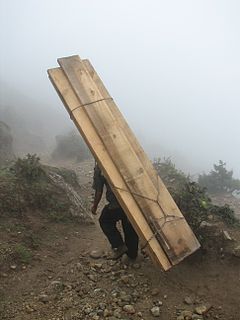
Human-powered transport is the transport of person(s) and/or goods using human muscle power. Unlike animal-powered transport, human-powered transport has existed since time immemorial in the form of walking, running and swimming. Modern technology has allowed machines to enhance human-power.
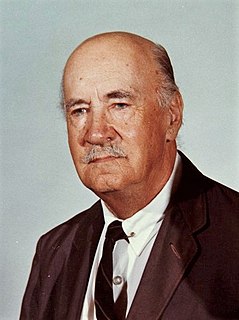
Igor Ivanovich Sikorsky was a Russian–American aviation pioneer in both helicopters and fixed-wing aircraft. His first success came with the S-2, the second aircraft of his design and construction. His fifth airplane, the S-5, won him national recognition as well as F.A.I. license number 64. His S-6-A received the highest award at the 1912 Moscow Aviation Exhibition, and in the fall of that year the aircraft won first prize for its young designer, builder and pilot in the military competition at Saint Petersburg.

Sikorsky Aircraft is an American aircraft manufacturer based in Stratford, Connecticut. It was established by aviation pioneer Igor Sikorsky in 1923 and was among the first companies to manufacture helicopters for civilian and military use.

An ornithopter is an aircraft that flies by flapping its wings. Designers sought to imitate the flapping-wing flight of birds, bats, and insects. Though machines may differ in form, they are usually built on the same scale as flying animals. Larger, crewed ornithopters have also been built and some have been successful. Crewed ornithopters are generally either powered by engines or by the pilot.
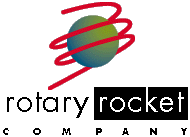
Rotary Rocket Company was an aerospace company in the late 1990s. Its founders were among the first to recognize that the end of the Cold War represented a significant shift away from the militarization of space, to a new civilian-led, commercial space industry. In 1996, Rotary Rocket Company was formed to address this emerging market.

The Sikorsky S-76 is a medium-size commercial utility helicopter designed and produced by the American helicopter manufacturer Sikorsky Aircraft. It is the company's first helicopter specifically developed for the civilian market.

AeroVironment, Inc. is an American defense contractor headquartered in Arlington, Virginia, that designs and manufactures unmanned aerial vehicles (UAVs). Dr. Paul B. MacCready Jr., a designer of human-powered aircraft, founded the company in 1971. The company is best known for its lightweight human-powered and solar-powered vehicles. The company is the US military's top supplier of small drones — notably the Raven, Switchblade, Wasp and Puma models.
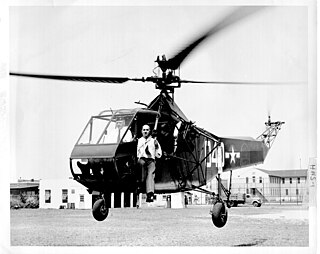
The Sikorsky R-4 is a two-seat helicopter that was designed by Igor Sikorsky with a single, three-bladed main rotor and powered by a radial engine. The R-4 was the world's first large-scale mass-produced helicopter and the first helicopter used by the United States Army Air Forces, the United States Navy, the United States Coast Guard and the United Kingdom's Royal Air Force and Royal Navy. In U.S. Navy and U.S. Coast Guard service, the helicopter was known as the Sikorsky HNS-1. In British service it was known as the Hoverfly.

The Vertical Flight Society, formerly the American Helicopter Society (AHS), is the non-profit technical society for the advancement of vertical flight. It has 21 different technical committees and two dozen active chapters around the world. There are over 100 Corporate Members and 28 Educational Members.

The Igor I. Sikorsky Human Powered Helicopter Competition was established in 1980 by the American Helicopter Society (AHS) International. The award, the AHS Sikorsky Prize, was given for the first human powered helicopter (HPH) to meet a set of extremely challenging flight requirements. In summary, the requirements to win the AHS Sikorsky Prize included a flight duration of 60 seconds and reaching an altitude of 3 meters, with the center point of the aircraft hovering over a 10-by-10-metre square.
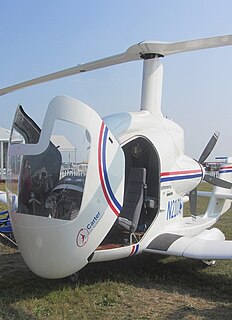
A personal air vehicle (PAV) is a proposed type of aircraft providing on-demand aviation services.

An electric aircraft is an aircraft powered by electricity, almost always via one or more electric motors which drive propellers. Electricity may be supplied by a variety of methods, the most common being batteries. Electrically powered model aircraft have been flown at least since the 1970s and were the forerunners of the small unmanned aerial vehicles (UAV) or drones, which in the twenty-first century have become widely used for many purposes.
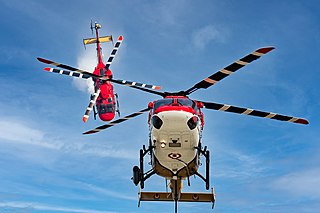
A helicopter is a type of rotorcraft in which lift and thrust are supplied by horizontally spinning rotors. This allows the helicopter to take off and land vertically, to hover, and to fly forward, backward and laterally. These attributes allow helicopters to be used in congested or isolated areas where fixed-wing aircraft and many forms of STOL or STOVL aircraft cannot perform without a runway.

The Sikorsky X2 is an experimental high-speed compound helicopter with coaxial rotors developed by Sikorsky Aircraft.

A human-powered aircraft (HPA) is an aircraft belonging to the class of vehicles known as human-powered transport.

The University of Maryland Gamera I is a human-powered helicopter designed to win the $250,000 Sikorsky Prize.
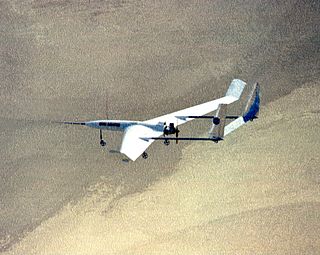
A Mars aircraft is a vehicle capable of sustaining powered flight in the atmosphere of Mars. So far, the Mars helicopter Ingenuity is the only object to ever fly on Mars, completing 33 successful flights covering 7.48 km (4.65 mi) in 58 minutes 41 seconds of flight time.
The University of Maryland Gamera II is an improved human-powered helicopter designed to win the US$250,000 Sikorsky Prize.

The AeroVelo Atlas is a human-powered helicopter (HPH) that was built for AHS International's Igor I. Sikorsky Human Powered Helicopter Competition. On 13 June 2013, it became the first aircraft to achieve the goals of the competition and thus won the prize.

The Sikorsky/Lockheed Martin VH-92 is an American helicopter under development to replace the United States Marine Corps' Marine One U.S. presidential transport fleet; it is a militarized variant of the Sikorsky S-92.



















